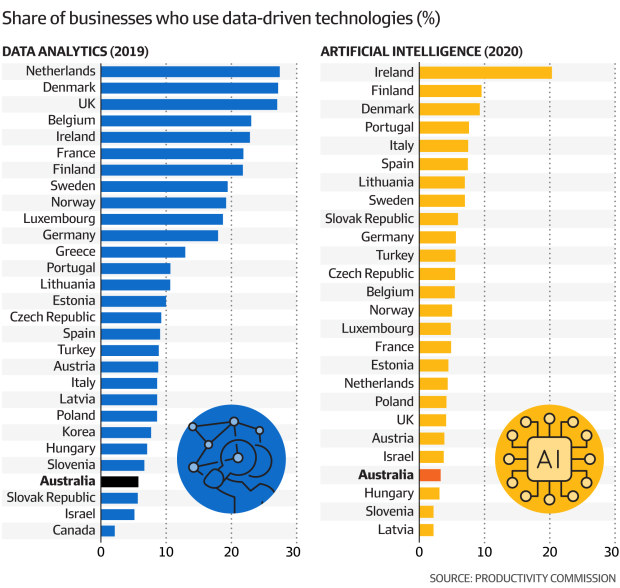The Productivity Commission’s Stephen King told The Australian Financial Review that more jobs would be created in digital technology over the next 10 years than could be filled by local applicants, even on the most optimistic estimates of domestic course completions.

“We will be training as many people domestically through both the VET (Vocational Education and Training) system, through a range of the unaccredited vendor providers … and through the university system,” Dr King said.
“But even with all of those domestic trainees, we’re still going to have a skills gap, and we still need to think about some migration to fill that gap.”
Debating migration
Updating the skilled occupation list more regularly, or adopting an entirely different approach based around employer nomination, could address concerns among businesses that the list was “arbitrarily complex and outmoded”, the commission wrote.
Dr King said some of the strongest jobs growth would be in areas such as data analytics, cybersecurity and cloud-based services.
Australia’s intake of foreign workers will be a major topic of debate at next week’s skills summit, with business groups calling for the annual migration intake to increase to at least 200,000 a year for the next two years, up from the present limit of 160,000.
The Australian Council of Trade Unions supports expanding the program to 200,000 workers, conditional on the government making other changes to the skilled migration program, including lifting the salary floor for temporary skilled migrants to $90,900 and abolishing visa conditions that tie workers to a single employer.
The Australian Workers Union will propose a requirement for employers to train a local worker for every skilled migrant they take on, and that the migrant will be made a default member of the relevant union, to guard against exploitation.
Aside from migration, governments can also boost digital uptake by improving how they fund technology investments in regional Australia, with the commission describing the present approach as lacking in transparency and accountability.
“Allocating funding via a technology-neutral tender mechanism could increase efficiency and transparency while guaranteeing minimum service outcomes,” the report says.
Treasurer Jim Chalmers said the government had committed to lifting internet speeds for 750,000 regional homes and businesses by providing $480 million towards an upgrade of the NBN fixed wireless network.
“Next week’s jobs and skills summit provides an opportunity to discuss how business innovation and investments in new technology can lift productivity growth,” he said.
Separately, a requirement for government-funded service providers in sectors such as health and education to share certain data would boost the scope for data-enabled productivity gains.
Other factors reducing the uptake of digital technology among businesses are uncertainty about the benefits, security concerns, cost and presence of legacy systems.
Productivity accounted for more than 80 per cent of national income growth over the past 30 years, according to previous research by the commission, but the rate of growth has stagnated in recent decades.
The commission said digital technologies improved productivity by reducing costs, improving the quality of goods and services and enhancing consumer choice.
Dr King said Australia was yet to tap the full potential of digital technology.
“Technologies such as artificial intelligence, robotic automation and big data analytics could revolutionise how businesses operate and help lift Australia’s productivity growth by reducing costs, improving the quality of goods and services and increasing product choice for consumers.”




